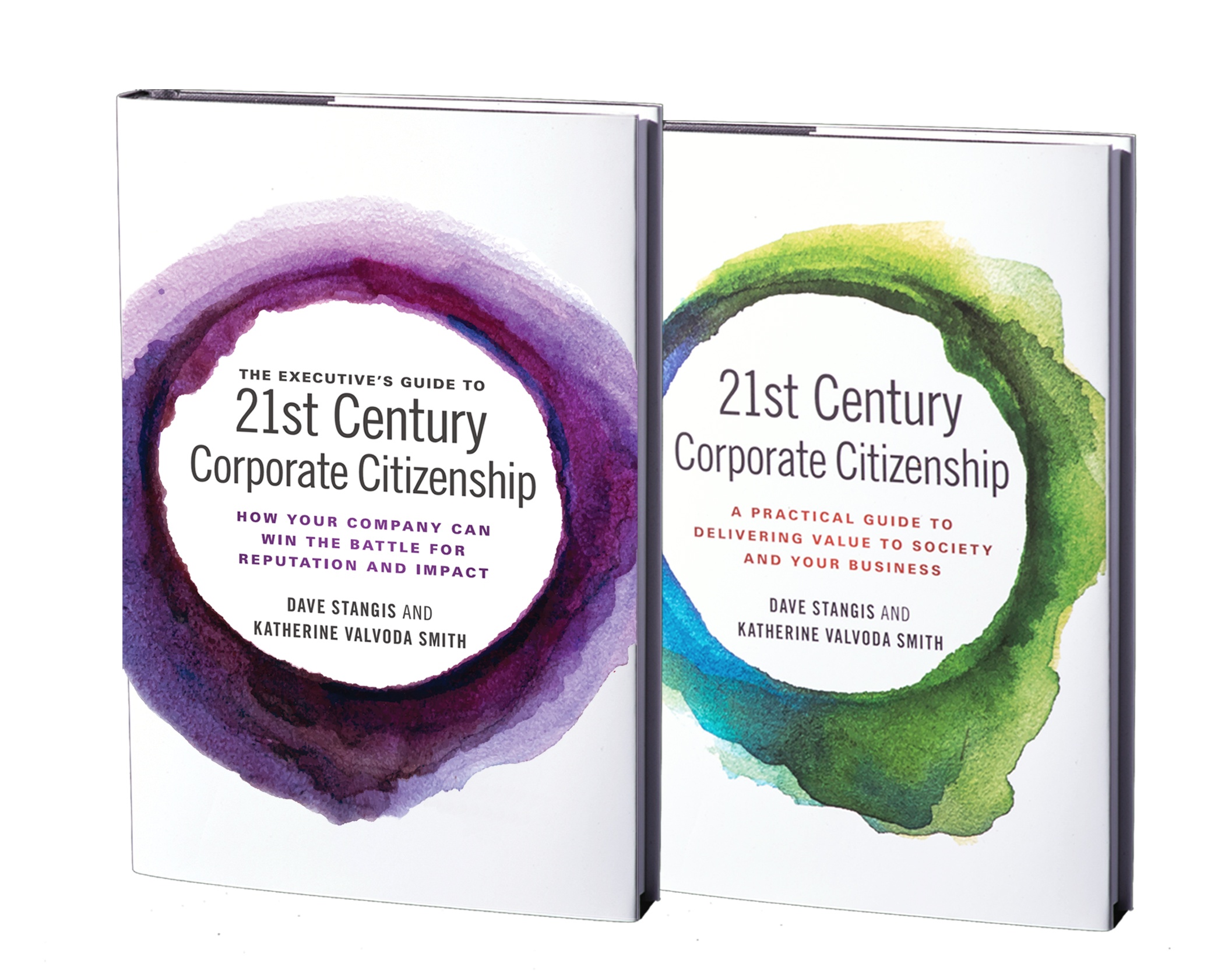 Last year, Dave Stangis—Vice President of Corporate Responsibility and Chief Sustainability Officer for the Campbell Soup Company—and I released two books to help corporate citizenship professionals align environmental, social, and governance (ESG) objectives with business goals to create long-term success. One book, titled The Executive’s Guide to 21st Century Corporate Citizenship, offers a guide for the business executive who is working to build a more ethical, resilient, sustainable, and profitable company. The other—21stCentury Corporate Citizenship: A Practical Guide to Delivering Value to Society and Your Business—serves as a step-by-step handbook for CSR professionals who are developing and implementing effective corporate citizenship programs.
Last year, Dave Stangis—Vice President of Corporate Responsibility and Chief Sustainability Officer for the Campbell Soup Company—and I released two books to help corporate citizenship professionals align environmental, social, and governance (ESG) objectives with business goals to create long-term success. One book, titled The Executive’s Guide to 21st Century Corporate Citizenship, offers a guide for the business executive who is working to build a more ethical, resilient, sustainable, and profitable company. The other—21stCentury Corporate Citizenship: A Practical Guide to Delivering Value to Society and Your Business—serves as a step-by-step handbook for CSR professionals who are developing and implementing effective corporate citizenship programs.
In both volumes, we have included the insights and best practices from leading CSR practitioners. In this excerpt from 21st Century Corporate Citizenship, Marlene Ibsen, Vice President of Community Relations at Travelers, shares the importance of effective strategy development and responsible corporate leadership during times of organizational change.
During the Center’s upcoming 2018 International Corporate Citizenship Conference, hosted by Travelers, we will have the privilege of hearing from Marlene, as well as many other CSR leaders from around the world. We hope you’ll considering joining us.

Working Through a Merger: Yours, Mine, and Ours
Marlene M. Ibsen, Vice President, Community Relations, The Travelers Companies, Inc.
Sometimes getting your team together can be more complicated than others. Travelers has grown not only organically but also through mergers and acquisitions. Experience has taught me that there are four practices to keep in mind when bringing two organizations together:
- Understand senior management’s aspirations.
- Honor the previous work of both organizations.
- Listen closely to team members’ ideas, leveraging their knowledge and experience.
- Employ "forthright diplomacy”: straight talk that is both respectful and direct.
My most recent experience comes from my position in corporate philanthropy where, early on, we had to focus on merging two separate U.S. operations, and more recently are working with our colleagues in offices in Canada and the United Kingdom to establish common practices and priorities as a means of promoting the corporate culture internally and reinforcing brand identity externally.
It is important to understand the company leadership’s priorities in terms of cultural values and norms. For instance, are there key themes or values that the merged entity is focused on and communicating to internal and external stakeholders (e.g., expertise, customer service, innovation, etc.)? The cultural vision for the organization will provide the foundation from which you will build your department’s strategy in support of business priorities.
If you are in a corporate citizenship role, whether as the overall lead for ESG programs or sustainability or a subset of the whole portfolio, identifying the ideal state is a key step. What combination of programs, resources, advisors, and structure will support the company’s business goals while aligning with the corporate culture? From there, you can begin to develop a framework—with targets and objectives—to achieve that ideal, establish processes, and cultivate an environment to enable the work.
To create a corporate citizenship strategy aligned with company values, you must evaluate existing programs from predecessor organizations against your new framework and take a hard look at whether they are effective tools for developing and sustaining the culture of the merged organization. Institute a discipline of challenging your own assumptions and those of others. Ensure you are encouraging open dialog from all team members, to take advantage of institutional knowledge and individual expertise that contributes to a strategy that will yield positive outcomes for your department and company.
Once you have determined direction, strategy, and programs, create a communications plan that takes the concerns and potential negative (and positive) impact on internal and external audiences into consideration. First step: approval from senior management; it is important to get input and buy-in from the top to ensure your plans are supported if the impending changes result in concerns being raised through other channels within the organization. For all audiences, be ready to explain the business rationale, which should include why the chosen initiatives are important to the company and its character.
Building from the key values of the organization gives you the starting place, and you can then evolve through a continual cycle of evaluating results and getting internal and external stakeholder feedback to ensure you are staying on the right track.
Join Marlene Ibsen and hundreds of other CSR practitioners at the International Corporate Citizenship Conference on April 8-10, 2018 in Los Angeles:
